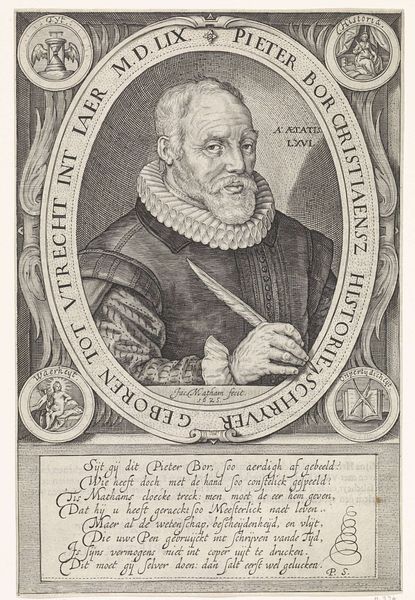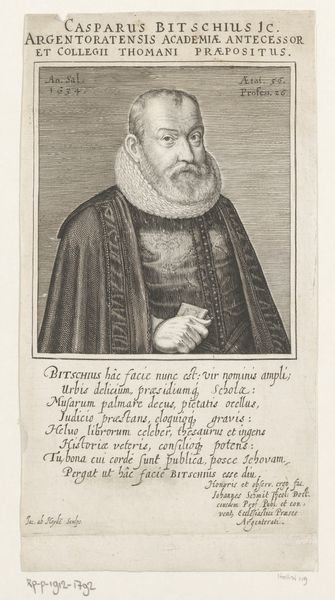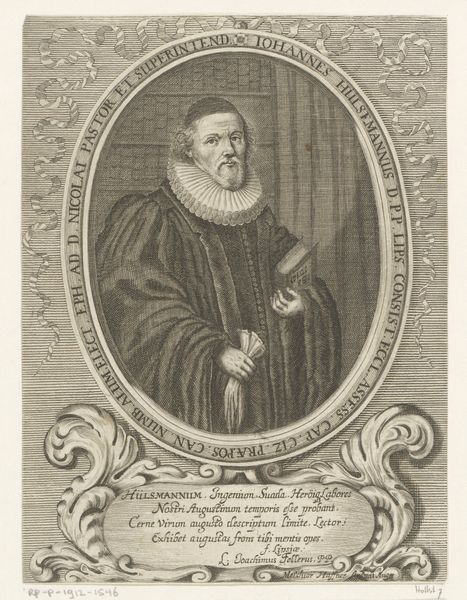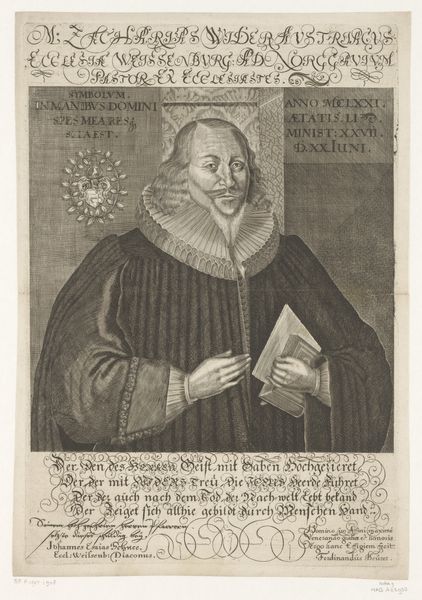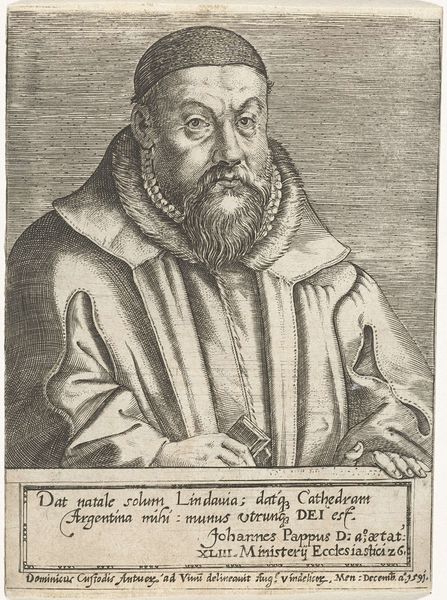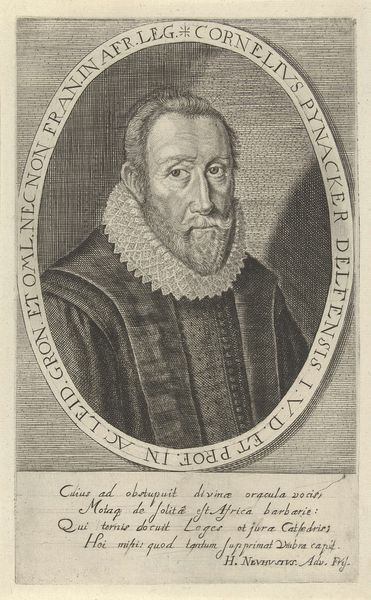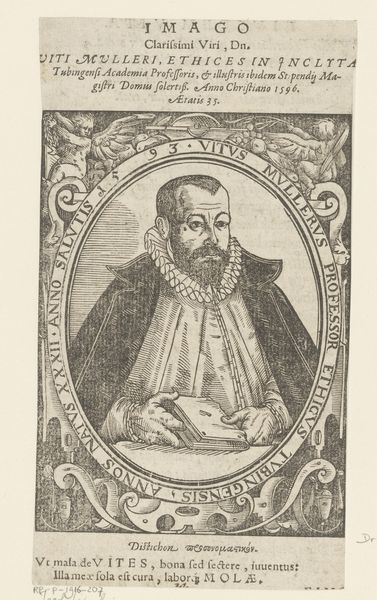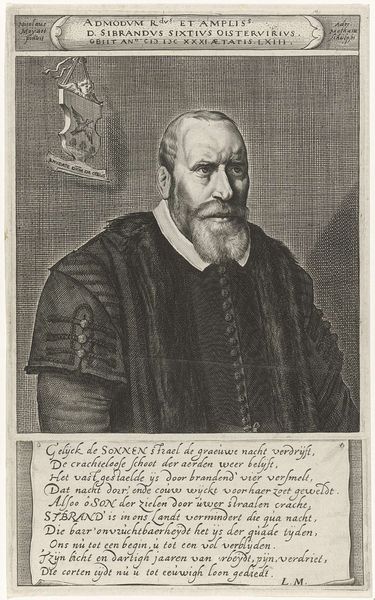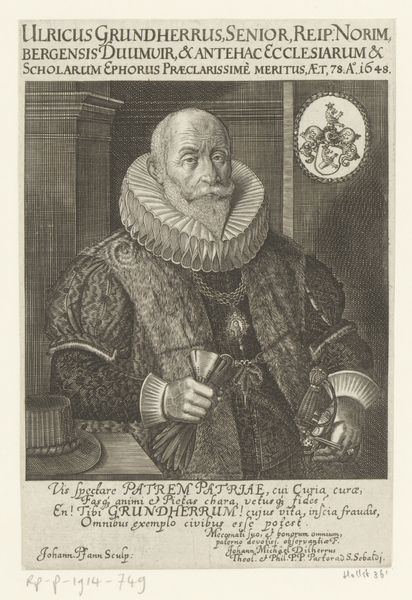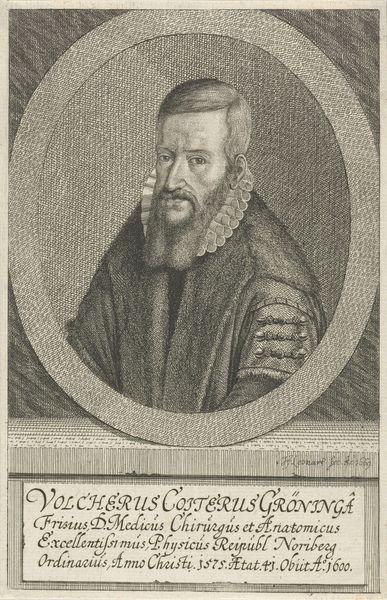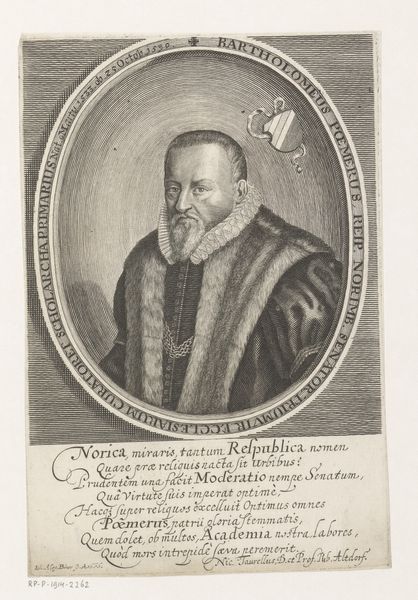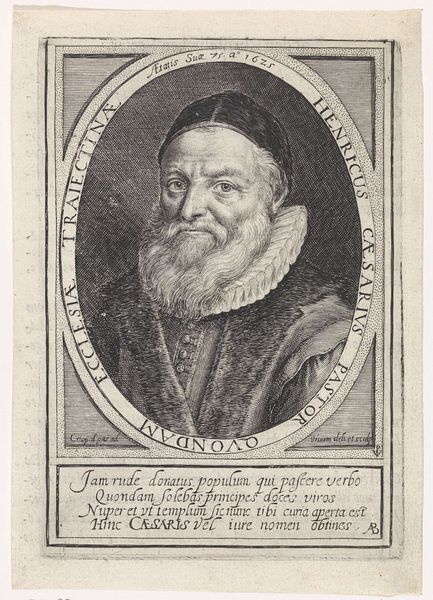
print, engraving
#
portrait
#
baroque
# print
#
old engraving style
#
portrait reference
#
portrait drawing
#
history-painting
#
engraving
Dimensions: height 204 mm, width 146 mm
Copyright: Rijks Museum: Open Domain
Curator: We’re looking at a print from 1622, "Portret van theoloog Johannes Arcerius" by Jan Diricks van Campen, an engraving capturing the theologian Johannes Arcerius. The detail achieved through the engraving process is remarkable. Editor: Immediately, the subject's gaze is very intense; the detail in his beard and the crispness of his ruffled collar creates a powerful presence, embodying the Baroque period, a time marked by religious conflicts, so perhaps we might explore the theological weight that underlies this portrait. Curator: Let's consider van Campen's choice of medium. Engraving allows for the mass production of images. How might the reproduction and distribution of Arcerius' image contribute to his influence and legacy as a theologian? Also notice the printed text; it emphasizes "COR SANE NISI VERA," or “A healthy heart unless it's true”. Editor: Yes, and by reproducing his image, van Campen also actively participated in shaping the memory and narrative surrounding Arcerius within a deeply divided Europe struggling through confessional disputes, with print culture as a kind of early public relations machine for prominent figures. There's definitely a performative aspect here relating to the era’s power dynamics and faith. Curator: I agree. The precise lines used in the engraving give his face a sense of gravitas and authority. The texture of the fur trim around his robe also communicates status, achieved through carefully controlled marks made using specialized tools on metal. What does this tell us about the labour involved? Editor: Considering that labor allows for us to acknowledge how access to specialized knowledge in engraving or connections with theologians like Arcerius were privileges. Examining portraits beyond the surface, for example like this print, opens important avenues to examining the social and intellectual landscape of 17th century Europe. Curator: Precisely, recognizing both the materials used, like the inks and paper, and the cultural impact the printing has provides a greater holistic context around pieces such as this one. Editor: Indeed; I believe focusing on context helps us see how the making and viewing of portraits played a significant role in disseminating both power and knowledge, and hopefully also prompts more awareness around portraiture's roles even today.
Comments
No comments
Be the first to comment and join the conversation on the ultimate creative platform.
